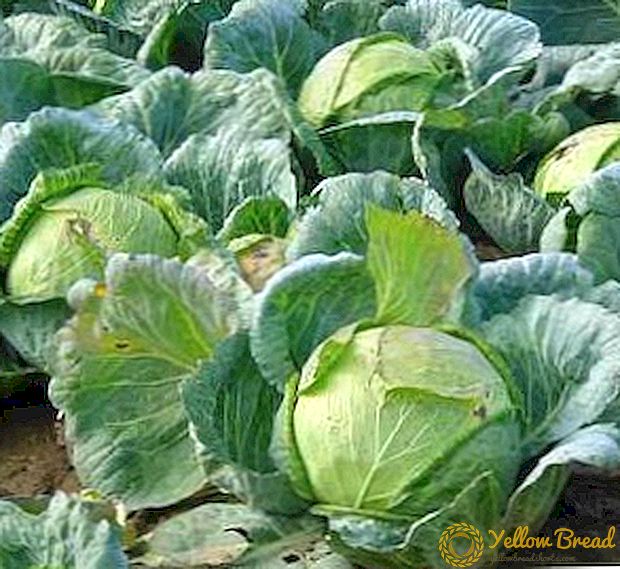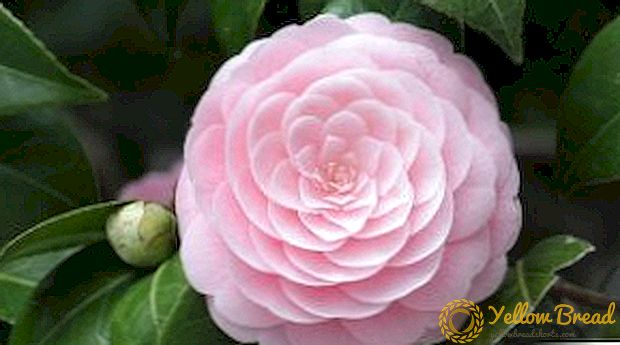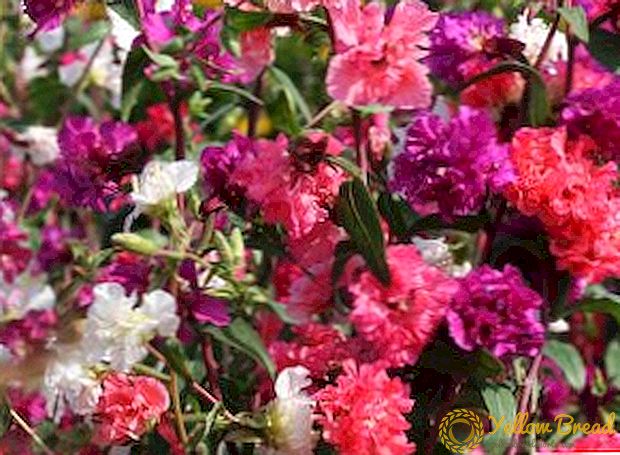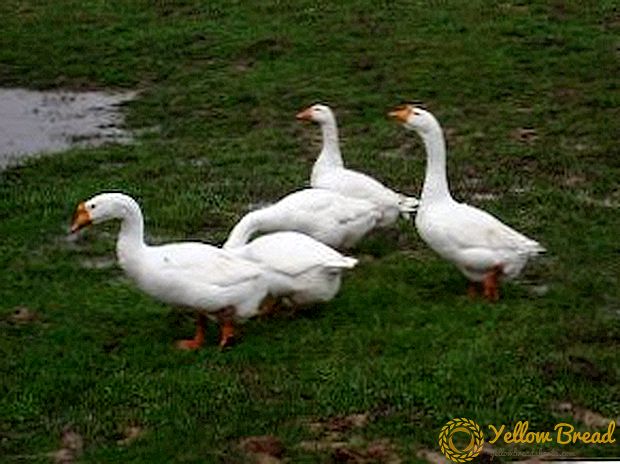 Cabbage is one of the most popular vegetable crops, which can be found in almost every garden, but not all manage to get a rich and high-quality crop. In this article we will get acquainted with the correct cultivation of white cabbage, with the rules of planting and caring for it in open ground.
Cabbage is one of the most popular vegetable crops, which can be found in almost every garden, but not all manage to get a rich and high-quality crop. In this article we will get acquainted with the correct cultivation of white cabbage, with the rules of planting and caring for it in open ground.
- Brief description and best varieties
- Planting seeds for seedlings
- Selection of seeds and preparation of the substrate
- Sowing
- Seedling care
- Planting white cabbage in open ground
- Cultivation
- How to water
- Top dressing
- Methods of protection against diseases and pests
- Harvesting
Brief description and best varieties
Cabbage is a two-year-old vegetable belonging to the cruciferous family of plants. Its thick greenish leaves closely adhere to each other and form a spherical head. White cabbage contains a lot of useful minerals and vitamins.
Today in our country a huge number of different varieties and hybrids of this vegetable are grown, but I would like to note the following varieties: Avak F1, Dita, Olympus, Sonya F1, Delta, Meridor F1, "Snow White", "Kitano Line". 
Planting seeds for seedlings
To get strong and healthy seedlings, you need to know how to choose good seeds and how to sow them correctly.
Selection of seeds and preparation of the substrate
Your choice of seeds will determine what crop you get. When choosing seeds for seedlings, you need to decide what you need white cabbage for - early and juicy for fresh summer salads or late for long winter storage: this is the main selection criterion.

Sowing
Before sowing seeds they should temper to increase disease resistance. To do this, the seeds are first heated for 15 minutes in warm water to 55 ° C, and then immersed in cold water for 4 minutes.
After hardening, the seeds need to be immersed for a couple of hours in a growth stimulator - it can be “Humat” or something else. Some varieties can not be wetted before sowing, so be sure to read the instructions on the package.
When the seeds are ready, they need to be placed in the ground to a depth of 1-1.5 cm and water once - the next watering is carried out after the emergence of sprouts. To preserve moisture, the soil must be covered with a film. Store seeds until germination should be at a temperature of + 18 ° C to + 22 ° C.
Seedling care
Seeds sprout start on average in 5 days. After that, it is necessary to remove the film coating and lower the temperature to + 5-10 ° C. After the first full sheet appears, the temperature should be increased to + 15-18 ° С during the daytime and + 5-10 ° С - at night. During this period, seedlings need in airing, but you need to make sure that there are no drafts that adversely affect the plant.
In addition, seedlings need additional lighting for 12 hours. After each watering, the ground should be slightly loosened to avoid drying out or waterlogging.
Planting white cabbage in open ground
When the seedlings are already grown, it is time to transplant them to the garden bed. However, the question immediately arises how to plant cabbage in open ground, in order to ensure its maximum survival rate and rapid growth.  As a rule, vegetable seedlings are planted in a permanent place when frosts have already receded. It is advisable to choose a cloudy day so that the heat does not affect the tender leaves of the plant. The bed on which the vegetable will grow should be divided into rows with holes 50x50 cm.
As a rule, vegetable seedlings are planted in a permanent place when frosts have already receded. It is advisable to choose a cloudy day so that the heat does not affect the tender leaves of the plant. The bed on which the vegetable will grow should be divided into rows with holes 50x50 cm.
Soil before planting should be fluff, then make a shallow hole and carefully place the seedlings, deepening it to the first real leaf. After that it is necessary to compact the soil around the stem and root. If necessary, shake a seedling for the first few days to retain moisture in the soil and improve survival.
Cultivation
After the seedlings have been transplanted, it becomes even more difficult to care for cabbage in open ground. It is necessary to adhere to the irrigated regime, to feed, feed pests and diseases.
How to water
You need to water the seedlings in the evening: if the weather is cloudy, then watering is carried out every 5 days; if the heat keeps for a long time, then you need to water every 2 days. After watering, be sure to loosen the ground and spud the seedlings.
Most gardeners recommend mulching, which helps retain moisture. Straw is good for mulch, wood chips, well, and the best option would be peat - it not only retains moisture, but also nourishes the plant.
Top dressing
One and a half weeks after transplantation into the open ground, the saplings of white cabbage should be fertilized. For this, a mixture with 2 g of potassium-based fertilizer, 3 g of superphosphates, 3 g of nitrate is suitable - all this can be dissolved in a liter of water: this can be enough for 50 seedlings. The second feeding is carried out in 12-14 days.Ingredients for fertilizer are the same, but only their dosage is doubled.
If you do not have the opportunity to prepare such a mixture yourself, then you can simply purchase some fertilizer for cabbage at an agricultural store. When the leaves begin to grow actively, it is recommended to fertilize the plant by preparing 10 g of nitrate per bucket of water: watering with this solution follows from the calculation of 2 liters per sapling.
The following dressing is carried out when forming a head - for this you will need:
- urea - 5 g;
- double superphosphate - 6 g;
- potassium sulfate - 9 g
- Stir all this in 15 liters of water (water with the same calculation as in the previous dressing).
Methods of protection against diseases and pests
White cabbage, like many other vegetables, is prone to disease and attack by parasites. In order not to have to process vegetables with harmful poisons, it is best to carry out prevention.
It is the right care and timely processing of biological products. To protect the vegetables from decay of the roots and black legs, seedlings are treated with the help of "Trikhodermin" or "Rizoplanoma": they should be brought in, following the instructions.Treatment with these drugs creates around the root protection against bacteria that cause diseases.
To protect against cruciferous flea and slugs, it is recommended to sprinkle the seedlings with a mixture of ash and shredded tobacco. You can also treat the plant "Intavir".
A very common pest is cruciferous bug. As a preventive measure, it is necessary to destroy such weeds as an old man, a shepherd's purse, a sverbig, a field field, a borage on the plot.
Before forming a cabbage, it is necessary to treat the "Aktellik" or "Phosbecid".
Harvesting
A couple of weeks before harvesting should stop watering - this contributes to the accumulation of fiber, which, in turn, improves the storage of vegetables. It is necessary to clean the cabbage along with the rhizome, then it should be sorted - the cabbages damaged by parasites and diseases are best eaten or fermented.
Vegetables suitable for storage should be dried for several days. After that, the root is cut, leaving the stalk with a couple of covering sheets, and then placed in storage in the refrigerator or basement.







